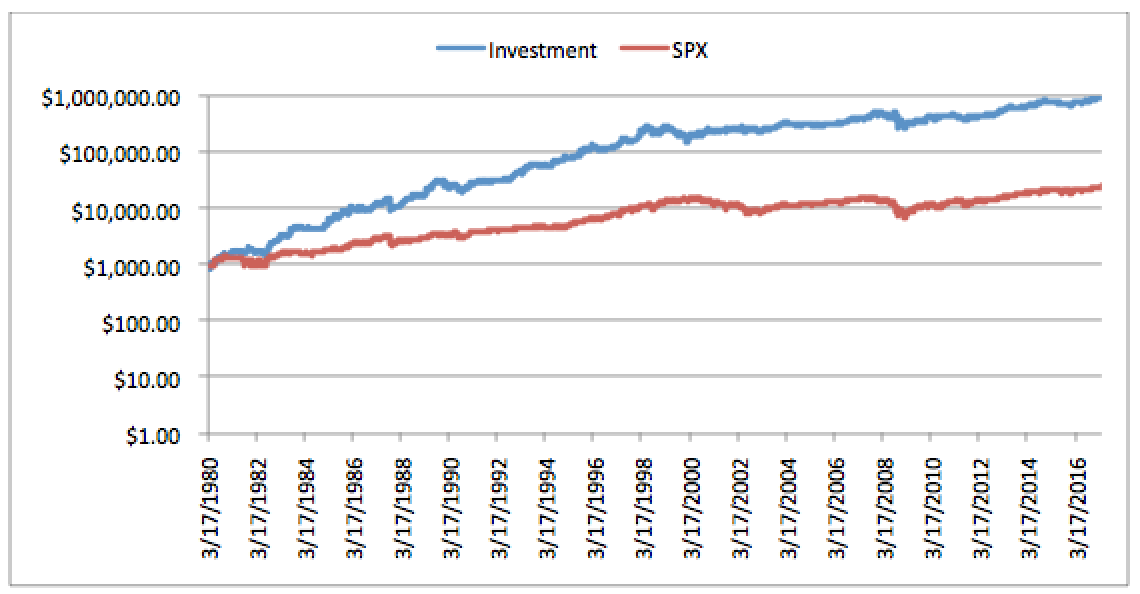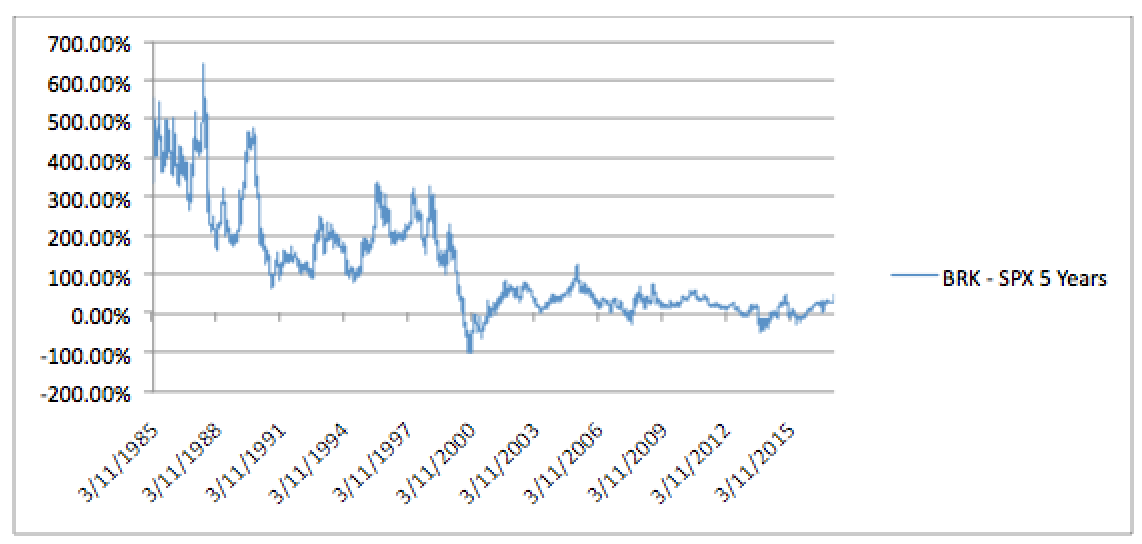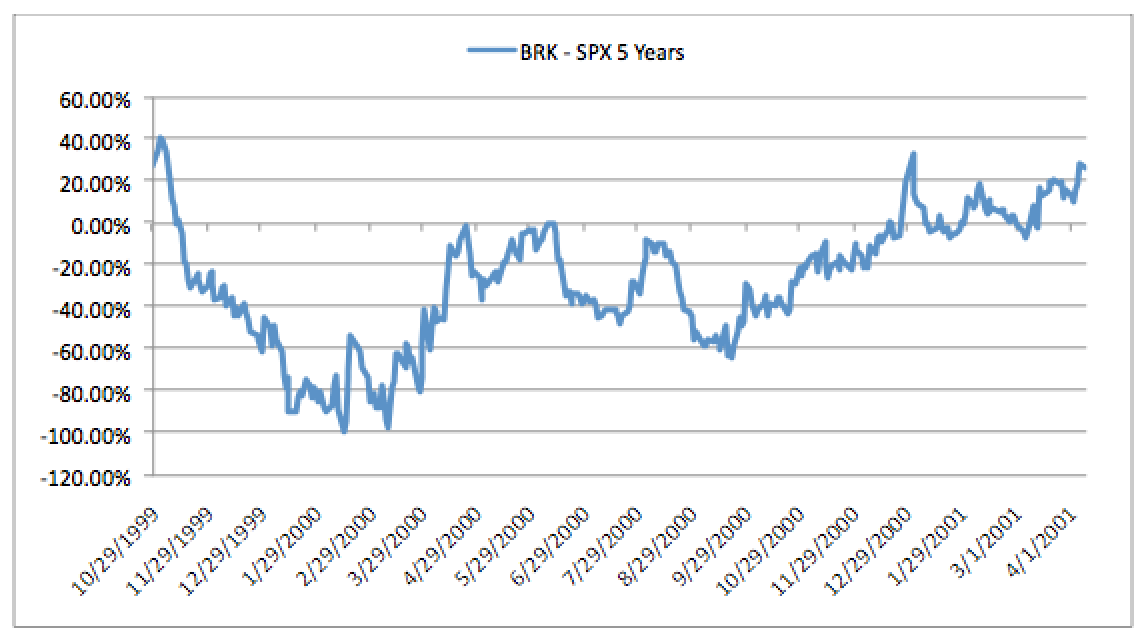No, this isn’t a post on the best workouts and you won’t see Jane Fonda with 80’s hair as you scroll down the page (or maybe you will, you’ll have to read to find out).
Today we’re going to take a look at a topic similar to, but slightly different than, the items we discussed in my last post: “Is too much information bad for investors?” In that post we examined the ideas of myopic loss aversion and prospect theory to illustrate that looking at our portfolios very frequently can have negative consequences regarding how we feel about our performance even though what we are seeing is totally normal. Fighting this bias is difficult, our minds are hard wired to think and feel this way. Overcoming natural biases is, by definition, unnatural. Hopefully learning about how our brains work can help investors stick to their plans and ride out the inevitable periods of negative performance that everyone experiences if they invest over the long run.
In the last post we looked at absolute performance (whether or not our portfolios were up or down) but today I’d like to look at relative performance; or the performance of a portfolio vs some benchmark. I think we’d all agree that we’d love to have put money to work in the “investment” shown below back in the 1980’s, right?
*Data from Yahoo Finance, calculations performed by Innova Wealth Partners, LLC
Putting $100,000 to work in the “investment” would’ve resulted in roughly $850,000 vs just over $23,000 in the S&P 500 today! I don’t think anyone could say with a straight face that they would’ve rather been invested in the S&P 500 vs this “investment.” What is that investment you ask? It’s probably familiar to you, it’s Warren Buffet’s Berkshire Hathaway shares. Well of course, he’s one of the best investors of all time (if not THE best), obviously he’s going to outperform the market, he always does!
That begs the question however; does he ALWAYS outperform the market? Let’s take a closer look. (Here come the fun charts!)
Below we’re looking at the rolling 22 day (roughly one month of trading days) returns of Berkshire Hathaway shares vs the S&P 500 Index. I know it’s hard to see but when the blue line in the chart is below 0% it means the index outperformed Mr. Buffet over the previous month and vice versa. It turns out that from 4/17/1980 until 4/11/2017 Warren outperformed the index 52.63% of the time, that’s more like “half the time” and certainly not “all the time.”
*Data from Yahoo Finance, calculations performed by Innova Wealth Partners, LLC
As you may have guessed from my last post, the odds that Warren outperformed get better as you expand the horizon over which we’re analyzing. For example if we examine 1 year returns (252 trading days to be exact) we find that Mr. Buffet outperforms 62.41% of the time (from 3/7/1981 – 4/11/2017) and if we look at 5 year rolling returns (again in trading days it’s roughly 1260) Buffet outperforms 90.37% of the time (from 3/11/1985 – 4/11/2017). Let’s take a look at the outperformance of rolling 5 year periods as sometimes the summary data hides some very interesting aspects. Here’s the chart:
*Data from Yahoo Finance, calculations performed by Innova Wealth Partners, LLC
At first it looks pretty much as expected. Remember that when the line is above the 0% mark that Berkshire has outperformed the S&P 500 (which is the majority of the time) as we’d expect from our analysis. However let’s zoom in on a specific time period, namely 10/29/1999 – 4/9/2001. Here’s the chart:
*Data from Yahoo Finance, calculations performed by Innova Wealth Partners, LLC
That’s some pretty drastic underperformance! Remember that each point on the chart below the 0% line represents the end of 5 years of underperformance. Let me repeat that, 5 years of underperforming! Not many investors can tolerate 1 year of underperformance let alone stick with it for 5 years! It shouldn’t be a surprise to hear then that Warren Buffet was once quoted as saying “The stock market is a device for transferring money from the impatient to the patient.” As we saw in the first chart in this post, investing in Berkshire Hathaway and sticking with it paid off in spades, however having the stomach to patiently wait out pretty long periods of underperformance is a trait most people don’t have (I guess that’s why we all aren’t Warren Buffet).
The best portfolios and strategies will have (sometimes long) periods of underperformance, in fact they have to or else they wouldn’t outperform in the first place. If a strategy worked all the time everyone would do it and then there’d be no premium left and no more outperformance. Sticking with a good strategy and being patient isn’t a guarantee that you’ll end up performing better than the market but it’s about as good a chance as you’ll ever get.
When it comes to investing you have to be a great loser in the short term to be a winner in the long term.
A a reward for reading through this blog…..





